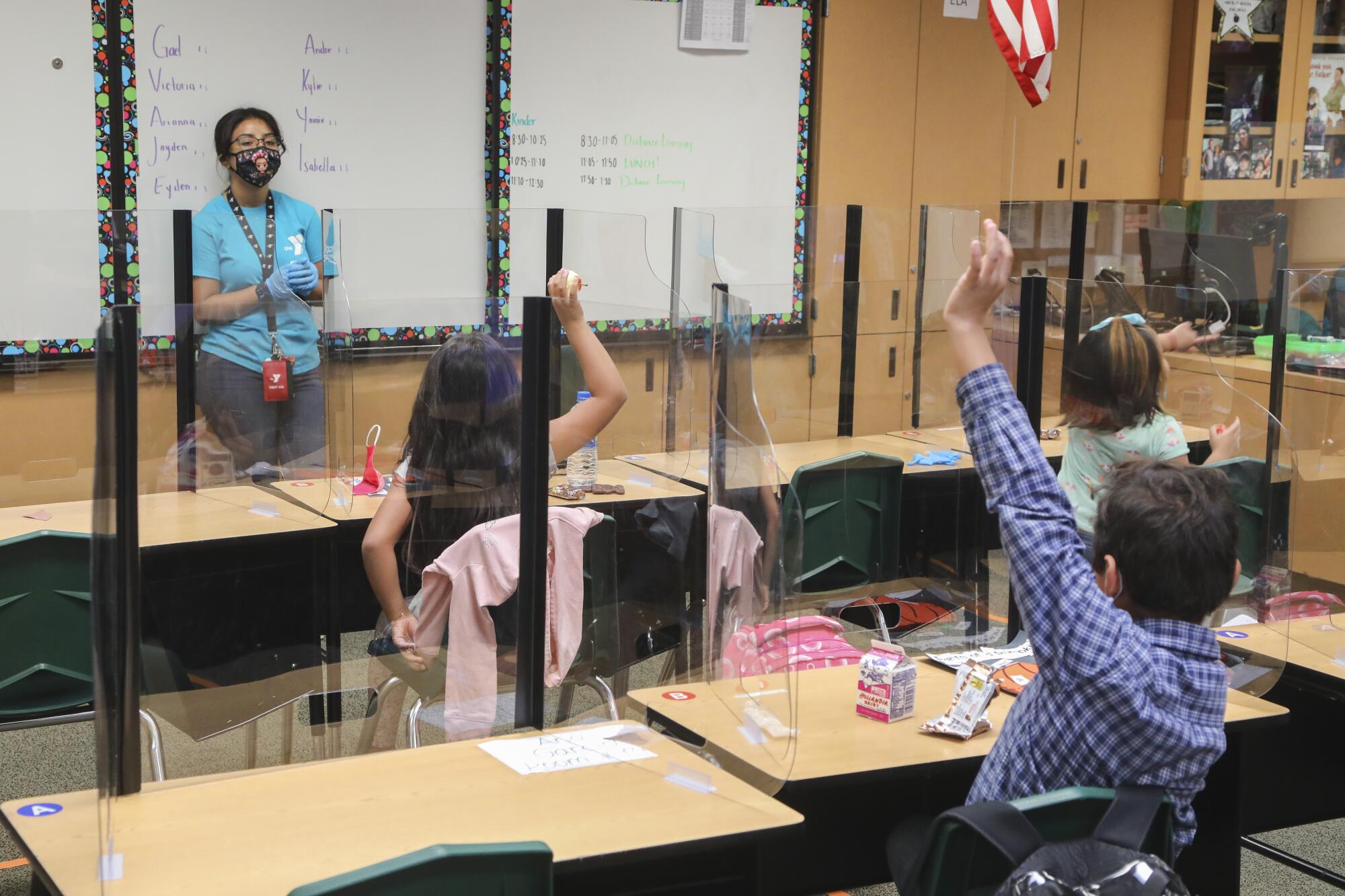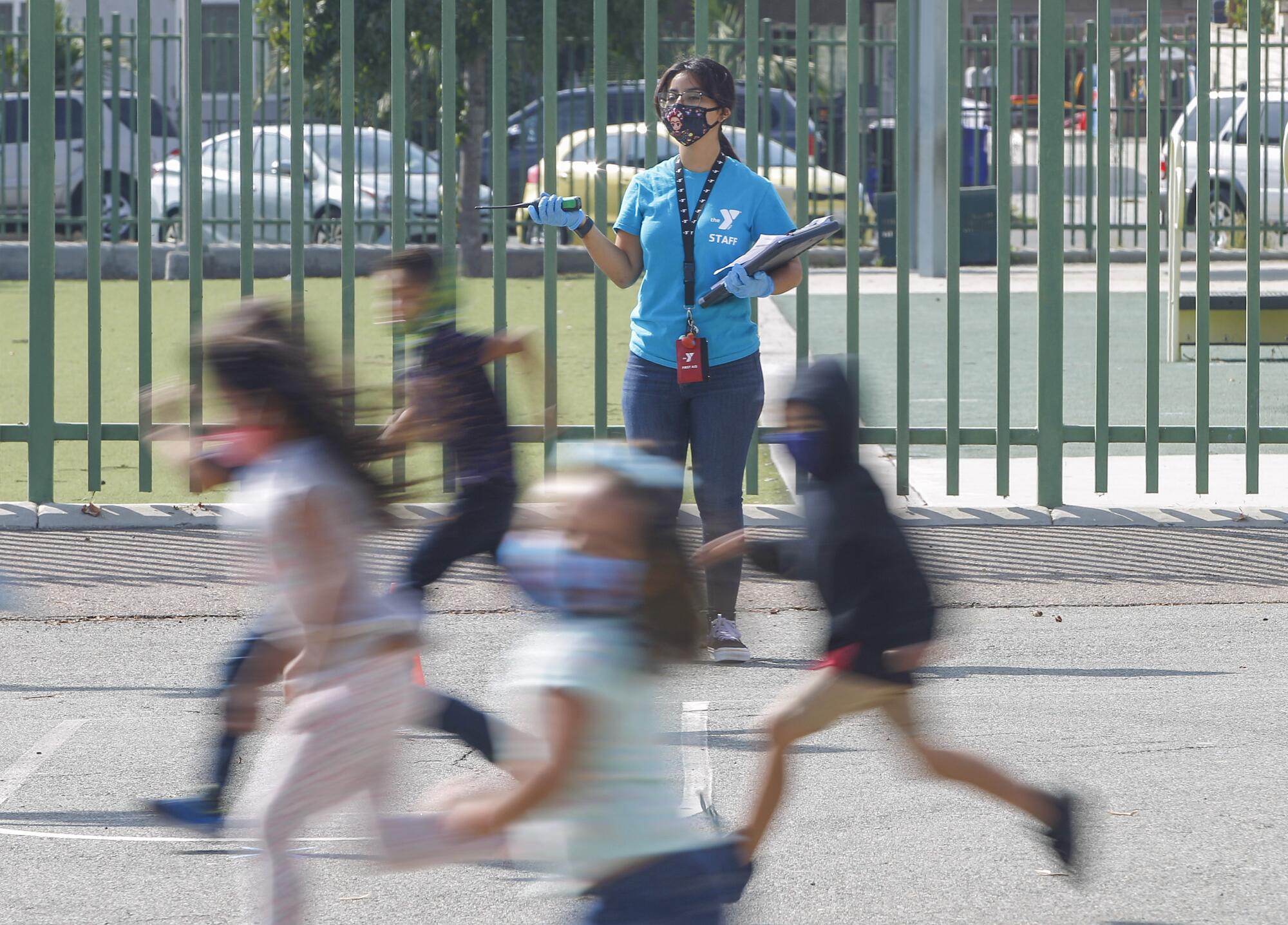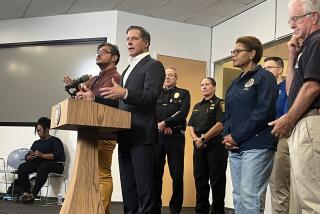
Poverty, exacerbated by the pandemic, presents one of the biggest barriers to learning for many students
Deborah Meza, a single mom of three children in San Ysidro, doesn’t know how she will be able to pay the rent that was due this month.
She said she lost her job as a receptionist at a dental office in July, shortly after being furloughed for eight weeks. To date she has only received three weeks’ worth of unemployment benefits — she was never told why she hasn’t been given more.
After paying $300 a month for her two daughters to attend community college classes online, her money has been depleted to a couple hundred dollars, she said. She particularly worries about how she’ll continue paying their tuition.
“It breaks my heart, because as a parent, you want your kid to do the things that you weren’t able to do, to push them to do better for themselves,” Meza said.

Meza said she has gotten some help from the nonprofit South Bay Community Services after her son’s school, San Ysidro Middle, referred her. The nonprofit has helped pay her electricity bill and rent, and now they are helping her find financial aid for her daughters’ college tuition.
“By the blessing of God, I have survived and gotten my family to October,” Meza said.
The Mezas are one of many families struggling to survive during a coronavirus pandemic that has only worsened long-existing poverty.
As school leaders fight to get students to participate in distance learning, as they work to get as many students enrolled as they can find, experts say they also must deal with the reality that if a family doesn’t know how they will put food on the table or where they can rest their head at night, it’s hard to expect them to do distance learning.
“I think the school districts have an insurmountable task. It’s engaging these youth when there are so many competing interests,” said Mauricio Torre, vice president of South Bay Community Services. “How does a child engage in distance learning when they’re all crammed into a tiny apartment with slow internet speeds? How does a parent who has two jobs help engage two or three children in distance learning?”
A recent SANDAG survey administered by a couple dozen nonprofits across the county to people they serve found that of more than 3,500 respondents, 71% have immediate unmet needs such as food, housing, employment and utilities.
“We found the top two needs on there were food and housing, and that was really eye-opening to all of us because those are basic, basic needs,” Torre said.
Meanwhile three-fifths of parents of school-aged children in the survey reported difficulties with distance learning last school year and about one in five parents said their children did not have regular access to a digital device.

Getting students enrolled and connected has taken more than just distributing devices and internet hotspots across the San Ysidro School District, where three-quarters of students come from low-income families, three-fifths are English learners and one-fourth are homeless.
“I think our greatest effort was talking to our partners that have an ear in the community and understand people’s issues and tying it to enrollment,” said Omar Calleros, an attendance, expanded learning and full service community schools coordinator for San Ysidro School District. “We really couldn’t have done this on our own.”
Torre said schools in San Ysidro, South Bay Union, National City and San Diego Unified have referred more than 1,300 students to South Bay Community Services since the start of the school year — students that the schools were unable to track down.
Caseworkers from the nonprofit call, write to families and visit their homes. Once they got a hold of the families, they ask them a series of questions about what they need and work to provide help — or find another nonprofit that can.
Last week, agency staff found a mother with three kids who have been couch surfing at different friends’ houses, Torre said. Recently they connected with a student whose grades have been dropping; they found out it was because she was helping her two younger siblings with distance learning and wasn’t able to focus on her own education.
Once, they found a high school sophomore who was living in a car with her grandma.
“Imagine trying to engage in distance learning when you’re living in a car,” Torre said.
Smythe Elementary Principal Russell Little said some of his families have both parents working, so their children are doing distance learning with grandparents, who often have trouble helping because they don’t know how to navigate online learning and don’t always speak English.
Many families still lack reliable internet access, Little said, even though his school distributed about 50 internet hotspots, because several kids could be using the internet at any one time for distance learning.
“That’s why we’re constantly calling, because if we see a kid slip off the radar, we don’t want to lose them,” Little said.
Many school districts have lost enrollment this fall for reasons related to the pandemic. San Ysidro officials said it’s an accomplishment that they’re only down by dozens of students, and at least one of its schools gained some students, according to the district.
The district credits its connections with nonprofits such as South Bay Community Services that are plugged into the community.
Another nonprofit, Casa Familiar, also helped the district to get students enrolled for the new school year.
Because of the pandemic, the district couldn’t allow families to enroll in-person at schools as they normally do. The district knew some families would have trouble navigating online enrollment and could run the risk of not signing up, Calleros said.
So school officials worked with Casa Familiar to bring enrollment registration to the families. They set up a pop-up tent registration booth at an affordable housing complex where they knew many families lived. They also set up booths at Casa Familiar’s community center and at one of the district’s elementary schools close to the U.S.-Mexico border, Calleros said.
Schools have also held drive-through school supply pick ups, Little said, and continue providing free meals for any children. Last week, the district started offering an in-person distance learning support program for some students.
Despite her circumstances, Meza still finds reasons to call herself blessed.
While she’s jobless, she said she’s grateful that she gets to sit down and eat breakfast with her son and that he’s a good kid who does his homework. She’s grateful for the food she has been able to get at San Ysidro schools’ free food distributions. And she’s grateful for the help she’s gotten from South Bay Community Services.
“I am pretty much just walking by faith right now that everything’s going to be OK,” Meza said.
Taketa writes for the San Diego Union-Tribune.
More to Read
Start your day right
Sign up for Essential California for news, features and recommendations from the L.A. Times and beyond in your inbox six days a week.
You may occasionally receive promotional content from the Los Angeles Times.







